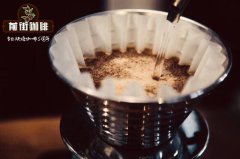How to classify defective coffee beans? Colombian coffee classification system standard is not general.

Professional coffee knowledge exchange more coffee bean information please follow the coffee workshop (Wechat official account cafe_style)
Introduction to Qianjie-Columbia grading system
Colombian raw beans are generally classified in two ways: defect classification and mesh size classification. In the view of a certain fish, according to the classification of defects, the coffee flavor is first controlled, the beans with bad flavor are removed one by one, and then the large and good-looking ones are divided into pieces according to the number of items, and finally packed and sold.
I. classify according to defects
In Colombia, the classification according to the defect rate is mainly based on the classification of unique defects developed by Colombia. Colombia divides defects into the first category and the second category respectively. 500g raw beans were randomly sampled and classified, and the maximum allowable range of defects of raw beans was 12 for the first class and 60 for the second class.
One of these defects is also known as the main defect (the classification of defects is related to the cup test characteristics): black, musty or sour, so the maximum allowable defect value is about 12. Private exporters of raw beans: no more than 12 defective beans in the first category and no more than 8 in the first category of defective beans by the National Coffee Council.
The second category of defects is also secondary (the classification of defects involves the appearance of raw beans): decolorized beans (aged beans, over-dried beans, soybeans, miscellaneous beans), bad beans (Broca), broken, broken beans, cut beans, insect bites, shell beans, unripe beans, special-shaped beans, gray or soft beans. The maximum allowable defect value is about 60. Private raw bean exporters: no more than 60 minor defective beans; National Coffee Council: no more than 35 category II defective beans.
According to the above criteria, the specific deductions are as follows:
Type of defect and calculation of defect score
The first kind of defects: all black beans, 1 1 point local black beans, 2 1 point full sour beans, 1 1 point faded amber beans, 2 1 point old beans, 2 1 points
Type II defects: sliced or notched beans, 1 1 point Baker bean, 1 1 point broken bean, 1 1 point damp or dry insufficient bean, 1 1 point immature bean, 1 1 point squeezed bean, 1 1 point
Crystalline beans, a moth-eaten bean with a score of 1 greater than or equal to 3 wormholes, and a 1 point
Knowledge: the coffee grading of most coffee-producing countries is not carried out according to one standard, but not only to examine the defect rate, but also to ensure the size of beans, but also to measure the grade of beans by multiple standards such as a certain altitude.
In short: Qianjie is a coffee research hall, happy to share the knowledge about coffee with you, we share unreservedly just to make more friends fall in love with coffee, and there will be three low-discount coffee activities every month. The reason is that Qianjie wants to make more friends drink the best coffee at the lowest price, which has been Qianjie's tenet for 6 years!
END
Important Notice :
前街咖啡 FrontStreet Coffee has moved to new addredd:
FrontStreet Coffee Address: 315,Donghua East Road,GuangZhou
Tel:020 38364473
- Prev

How to classify coffee beans A brief introduction to the classification standard of Ethiopian defective beans
Professional coffee knowledge exchange more coffee bean information please follow the coffee workshop (Wechat official account cafe_style) front street-defective bean classification system this is the earliest classification method, the main representative countries that use the defective bean proportion method are Ethiopia, Indonesia and so on. Indonesian beans are mainly divided into six grades, namely G1~G6. Ethiopian coffee beans are graded with 300g coffee beans.
- Next

Is the coffee bean grade SHB the highest? what is the standard for the coffee system in Guatemala?
Professional coffee knowledge exchange more coffee bean information please follow the coffee workshop (Wechat official account cafe_style) front street-Guatemala coffee grading system the highest elevation in the Tamara mountains: 2000m, generally the highest planting area in 1700m above sea level, the lowest planting area is about 700m, of course, do not rule out planting areas below 600m. According to the altitude grade, altitude SHB (S)
Related
- Beginners will see the "Coffee pull flower" guide!
- What is the difference between ice blog purified milk and ordinary milk coffee?
- Why is the Philippines the largest producer of crops in Liberia?
- For coffee extraction, should the fine powder be retained?
- How does extracted espresso fill pressed powder? How much strength does it take to press the powder?
- How to make jasmine cold extract coffee? Is the jasmine + latte good?
- Will this little toy really make the coffee taste better? How does Lily Drip affect coffee extraction?
- Will the action of slapping the filter cup also affect coffee extraction?
- What's the difference between powder-to-water ratio and powder-to-liquid ratio?
- What is the Ethiopian local species? What does it have to do with Heirloom native species?

